#peter benison
Photo
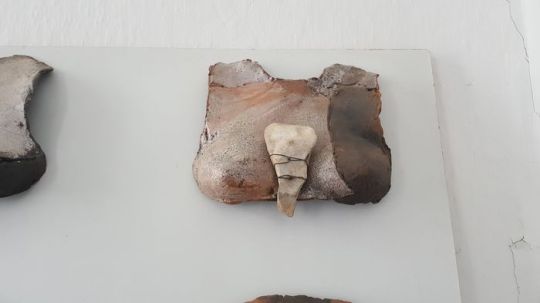
London and the Bastille was at Paris
As a rule there was no citadel as in the ancient cities, though there was sometimes an upper and a lower town, and often a castle in one comer or side of the city, as the Tower is at London and the Bastille was at Paris, St. Angelo at Rome, or Blachernae and the Seven Towers at Constantinople. The place of citadel was usually occupied by some vast central cathedral or abbey; which, with its adjuncts, occupied nearly one-tenth of the whole area in such cities as Lincoln, York, Amiens, Reims, Orvieto; and even in cities like Florence, Paris, Rouen, London, Antwerp, and Cologne, stood out in the far distance towering over the city as did the Acropolis at Athens or the Capitol at Rome. Within the walls, and around the walls for a distance of many miles, was a profusion of churches, abbeys, nunneries, chapels, oratories, varying from such enormous piles as those of Westminster, of Si. Germain des Prfc, St. Peter’s and the Vatican at Rome, to the smallest chantry on the pier of a bridge where a benison could be said.
The ancient temples
Many of these churches were far larger than the ancient temples; and if their architecture had not the stately and simple dignity of the Doric fane, they were far richer in varied works of art, more gorgeous in colour, and infinitely more charged with religious and aesthetic impression. Painting, fresco, mosaic, stained glass, gilding, carved statues, coloured marbles, images and reliefs in thousands, chased gold and silver utensils, bronzes, ivories, silks, velvets, tapestries, embroideries, illuminated books, carved wood, bells, clocks, perfumes, organs, instruments, choirs of singers — every beautiful and delightful thing was crowded together, with the relics of saints, the tombs of great men, the graves of citizens for centuries, wonderworking pictures, miraculous images, lamps and candles on a thousand altars, chapels, offerings and images dedicated to countless saints, martyrs, and holy men. A mediaeval Church, however much it lacked the austere simplicity and faultless symmetry of a Greek temple, was as much deeper and more full in its solemnity and power, as the Catholic mythology was deeper and nobler than the classical mythology city tours istanbul.
So too the Church was morally a far nobler thing than the Temple. It was no mere colonnade for processions, lounging, and society. It was this, but much more also. It was school, art-museum, music-hall, place of personal prayer; of confession of sin, preaching, teaching, and civilising.
It combined what at Athens was to be sought in Parthenon, Theseum, Theatre, Academus, Stoa, and Agora — and very much beside which was never known at Athens at all— sacrament, confession, penance, sermon. A Mediaeval city was full of such centres of moral and spiritual education; and in and around such cities as Rome, Paris, and London, the religious edifices of all kinds were counted not by hundreds, but by thousands. Every great mediaeval city contained its monasteries, nunneries, hospices, and colleges, vast ranges of foundations that were at once schools, training colleges, hospitals, refuges, and poor- houses. Here was the grand difference between the ancient and the mediaeval city.
0 notes
Photo

London and the Bastille was at Paris
As a rule there was no citadel as in the ancient cities, though there was sometimes an upper and a lower town, and often a castle in one comer or side of the city, as the Tower is at London and the Bastille was at Paris, St. Angelo at Rome, or Blachernae and the Seven Towers at Constantinople. The place of citadel was usually occupied by some vast central cathedral or abbey; which, with its adjuncts, occupied nearly one-tenth of the whole area in such cities as Lincoln, York, Amiens, Reims, Orvieto; and even in cities like Florence, Paris, Rouen, London, Antwerp, and Cologne, stood out in the far distance towering over the city as did the Acropolis at Athens or the Capitol at Rome. Within the walls, and around the walls for a distance of many miles, was a profusion of churches, abbeys, nunneries, chapels, oratories, varying from such enormous piles as those of Westminster, of Si. Germain des Prfc, St. Peter’s and the Vatican at Rome, to the smallest chantry on the pier of a bridge where a benison could be said.
The ancient temples
Many of these churches were far larger than the ancient temples; and if their architecture had not the stately and simple dignity of the Doric fane, they were far richer in varied works of art, more gorgeous in colour, and infinitely more charged with religious and aesthetic impression. Painting, fresco, mosaic, stained glass, gilding, carved statues, coloured marbles, images and reliefs in thousands, chased gold and silver utensils, bronzes, ivories, silks, velvets, tapestries, embroideries, illuminated books, carved wood, bells, clocks, perfumes, organs, instruments, choirs of singers — every beautiful and delightful thing was crowded together, with the relics of saints, the tombs of great men, the graves of citizens for centuries, wonderworking pictures, miraculous images, lamps and candles on a thousand altars, chapels, offerings and images dedicated to countless saints, martyrs, and holy men. A mediaeval Church, however much it lacked the austere simplicity and faultless symmetry of a Greek temple, was as much deeper and more full in its solemnity and power, as the Catholic mythology was deeper and nobler than the classical mythology city tours istanbul.
So too the Church was morally a far nobler thing than the Temple. It was no mere colonnade for processions, lounging, and society. It was this, but much more also. It was school, art-museum, music-hall, place of personal prayer; of confession of sin, preaching, teaching, and civilising.
It combined what at Athens was to be sought in Parthenon, Theseum, Theatre, Academus, Stoa, and Agora — and very much beside which was never known at Athens at all— sacrament, confession, penance, sermon. A Mediaeval city was full of such centres of moral and spiritual education; and in and around such cities as Rome, Paris, and London, the religious edifices of all kinds were counted not by hundreds, but by thousands. Every great mediaeval city contained its monasteries, nunneries, hospices, and colleges, vast ranges of foundations that were at once schools, training colleges, hospitals, refuges, and poor- houses. Here was the grand difference between the ancient and the mediaeval city.
0 notes
Photo
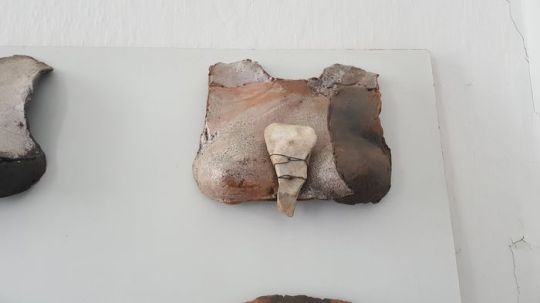
London and the Bastille was at Paris
As a rule there was no citadel as in the ancient cities, though there was sometimes an upper and a lower town, and often a castle in one comer or side of the city, as the Tower is at London and the Bastille was at Paris, St. Angelo at Rome, or Blachernae and the Seven Towers at Constantinople. The place of citadel was usually occupied by some vast central cathedral or abbey; which, with its adjuncts, occupied nearly one-tenth of the whole area in such cities as Lincoln, York, Amiens, Reims, Orvieto; and even in cities like Florence, Paris, Rouen, London, Antwerp, and Cologne, stood out in the far distance towering over the city as did the Acropolis at Athens or the Capitol at Rome. Within the walls, and around the walls for a distance of many miles, was a profusion of churches, abbeys, nunneries, chapels, oratories, varying from such enormous piles as those of Westminster, of Si. Germain des Prfc, St. Peter’s and the Vatican at Rome, to the smallest chantry on the pier of a bridge where a benison could be said.
The ancient temples
Many of these churches were far larger than the ancient temples; and if their architecture had not the stately and simple dignity of the Doric fane, they were far richer in varied works of art, more gorgeous in colour, and infinitely more charged with religious and aesthetic impression. Painting, fresco, mosaic, stained glass, gilding, carved statues, coloured marbles, images and reliefs in thousands, chased gold and silver utensils, bronzes, ivories, silks, velvets, tapestries, embroideries, illuminated books, carved wood, bells, clocks, perfumes, organs, instruments, choirs of singers — every beautiful and delightful thing was crowded together, with the relics of saints, the tombs of great men, the graves of citizens for centuries, wonderworking pictures, miraculous images, lamps and candles on a thousand altars, chapels, offerings and images dedicated to countless saints, martyrs, and holy men. A mediaeval Church, however much it lacked the austere simplicity and faultless symmetry of a Greek temple, was as much deeper and more full in its solemnity and power, as the Catholic mythology was deeper and nobler than the classical mythology city tours istanbul.
So too the Church was morally a far nobler thing than the Temple. It was no mere colonnade for processions, lounging, and society. It was this, but much more also. It was school, art-museum, music-hall, place of personal prayer; of confession of sin, preaching, teaching, and civilising.
It combined what at Athens was to be sought in Parthenon, Theseum, Theatre, Academus, Stoa, and Agora — and very much beside which was never known at Athens at all— sacrament, confession, penance, sermon. A Mediaeval city was full of such centres of moral and spiritual education; and in and around such cities as Rome, Paris, and London, the religious edifices of all kinds were counted not by hundreds, but by thousands. Every great mediaeval city contained its monasteries, nunneries, hospices, and colleges, vast ranges of foundations that were at once schools, training colleges, hospitals, refuges, and poor- houses. Here was the grand difference between the ancient and the mediaeval city.
0 notes
Photo
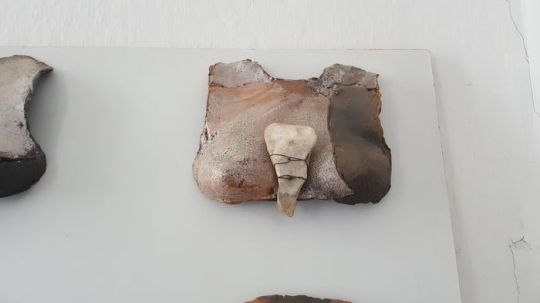
London and the Bastille was at Paris
As a rule there was no citadel as in the ancient cities, though there was sometimes an upper and a lower town, and often a castle in one comer or side of the city, as the Tower is at London and the Bastille was at Paris, St. Angelo at Rome, or Blachernae and the Seven Towers at Constantinople. The place of citadel was usually occupied by some vast central cathedral or abbey; which, with its adjuncts, occupied nearly one-tenth of the whole area in such cities as Lincoln, York, Amiens, Reims, Orvieto; and even in cities like Florence, Paris, Rouen, London, Antwerp, and Cologne, stood out in the far distance towering over the city as did the Acropolis at Athens or the Capitol at Rome. Within the walls, and around the walls for a distance of many miles, was a profusion of churches, abbeys, nunneries, chapels, oratories, varying from such enormous piles as those of Westminster, of Si. Germain des Prfc, St. Peter’s and the Vatican at Rome, to the smallest chantry on the pier of a bridge where a benison could be said.
The ancient temples
Many of these churches were far larger than the ancient temples; and if their architecture had not the stately and simple dignity of the Doric fane, they were far richer in varied works of art, more gorgeous in colour, and infinitely more charged with religious and aesthetic impression. Painting, fresco, mosaic, stained glass, gilding, carved statues, coloured marbles, images and reliefs in thousands, chased gold and silver utensils, bronzes, ivories, silks, velvets, tapestries, embroideries, illuminated books, carved wood, bells, clocks, perfumes, organs, instruments, choirs of singers — every beautiful and delightful thing was crowded together, with the relics of saints, the tombs of great men, the graves of citizens for centuries, wonderworking pictures, miraculous images, lamps and candles on a thousand altars, chapels, offerings and images dedicated to countless saints, martyrs, and holy men. A mediaeval Church, however much it lacked the austere simplicity and faultless symmetry of a Greek temple, was as much deeper and more full in its solemnity and power, as the Catholic mythology was deeper and nobler than the classical mythology city tours istanbul.
So too the Church was morally a far nobler thing than the Temple. It was no mere colonnade for processions, lounging, and society. It was this, but much more also. It was school, art-museum, music-hall, place of personal prayer; of confession of sin, preaching, teaching, and civilising.
It combined what at Athens was to be sought in Parthenon, Theseum, Theatre, Academus, Stoa, and Agora — and very much beside which was never known at Athens at all— sacrament, confession, penance, sermon. A Mediaeval city was full of such centres of moral and spiritual education; and in and around such cities as Rome, Paris, and London, the religious edifices of all kinds were counted not by hundreds, but by thousands. Every great mediaeval city contained its monasteries, nunneries, hospices, and colleges, vast ranges of foundations that were at once schools, training colleges, hospitals, refuges, and poor- houses. Here was the grand difference between the ancient and the mediaeval city.
0 notes
Photo

London and the Bastille was at Paris
As a rule there was no citadel as in the ancient cities, though there was sometimes an upper and a lower town, and often a castle in one comer or side of the city, as the Tower is at London and the Bastille was at Paris, St. Angelo at Rome, or Blachernae and the Seven Towers at Constantinople. The place of citadel was usually occupied by some vast central cathedral or abbey; which, with its adjuncts, occupied nearly one-tenth of the whole area in such cities as Lincoln, York, Amiens, Reims, Orvieto; and even in cities like Florence, Paris, Rouen, London, Antwerp, and Cologne, stood out in the far distance towering over the city as did the Acropolis at Athens or the Capitol at Rome. Within the walls, and around the walls for a distance of many miles, was a profusion of churches, abbeys, nunneries, chapels, oratories, varying from such enormous piles as those of Westminster, of Si. Germain des Prfc, St. Peter’s and the Vatican at Rome, to the smallest chantry on the pier of a bridge where a benison could be said.
The ancient temples
Many of these churches were far larger than the ancient temples; and if their architecture had not the stately and simple dignity of the Doric fane, they were far richer in varied works of art, more gorgeous in colour, and infinitely more charged with religious and aesthetic impression. Painting, fresco, mosaic, stained glass, gilding, carved statues, coloured marbles, images and reliefs in thousands, chased gold and silver utensils, bronzes, ivories, silks, velvets, tapestries, embroideries, illuminated books, carved wood, bells, clocks, perfumes, organs, instruments, choirs of singers — every beautiful and delightful thing was crowded together, with the relics of saints, the tombs of great men, the graves of citizens for centuries, wonderworking pictures, miraculous images, lamps and candles on a thousand altars, chapels, offerings and images dedicated to countless saints, martyrs, and holy men. A mediaeval Church, however much it lacked the austere simplicity and faultless symmetry of a Greek temple, was as much deeper and more full in its solemnity and power, as the Catholic mythology was deeper and nobler than the classical mythology city tours istanbul.
So too the Church was morally a far nobler thing than the Temple. It was no mere colonnade for processions, lounging, and society. It was this, but much more also. It was school, art-museum, music-hall, place of personal prayer; of confession of sin, preaching, teaching, and civilising.
It combined what at Athens was to be sought in Parthenon, Theseum, Theatre, Academus, Stoa, and Agora — and very much beside which was never known at Athens at all— sacrament, confession, penance, sermon. A Mediaeval city was full of such centres of moral and spiritual education; and in and around such cities as Rome, Paris, and London, the religious edifices of all kinds were counted not by hundreds, but by thousands. Every great mediaeval city contained its monasteries, nunneries, hospices, and colleges, vast ranges of foundations that were at once schools, training colleges, hospitals, refuges, and poor- houses. Here was the grand difference between the ancient and the mediaeval city.
0 notes
Photo

London and the Bastille was at Paris
As a rule there was no citadel as in the ancient cities, though there was sometimes an upper and a lower town, and often a castle in one comer or side of the city, as the Tower is at London and the Bastille was at Paris, St. Angelo at Rome, or Blachernae and the Seven Towers at Constantinople. The place of citadel was usually occupied by some vast central cathedral or abbey; which, with its adjuncts, occupied nearly one-tenth of the whole area in such cities as Lincoln, York, Amiens, Reims, Orvieto; and even in cities like Florence, Paris, Rouen, London, Antwerp, and Cologne, stood out in the far distance towering over the city as did the Acropolis at Athens or the Capitol at Rome. Within the walls, and around the walls for a distance of many miles, was a profusion of churches, abbeys, nunneries, chapels, oratories, varying from such enormous piles as those of Westminster, of Si. Germain des Prfc, St. Peter’s and the Vatican at Rome, to the smallest chantry on the pier of a bridge where a benison could be said.
The ancient temples
Many of these churches were far larger than the ancient temples; and if their architecture had not the stately and simple dignity of the Doric fane, they were far richer in varied works of art, more gorgeous in colour, and infinitely more charged with religious and aesthetic impression. Painting, fresco, mosaic, stained glass, gilding, carved statues, coloured marbles, images and reliefs in thousands, chased gold and silver utensils, bronzes, ivories, silks, velvets, tapestries, embroideries, illuminated books, carved wood, bells, clocks, perfumes, organs, instruments, choirs of singers — every beautiful and delightful thing was crowded together, with the relics of saints, the tombs of great men, the graves of citizens for centuries, wonderworking pictures, miraculous images, lamps and candles on a thousand altars, chapels, offerings and images dedicated to countless saints, martyrs, and holy men. A mediaeval Church, however much it lacked the austere simplicity and faultless symmetry of a Greek temple, was as much deeper and more full in its solemnity and power, as the Catholic mythology was deeper and nobler than the classical mythology city tours istanbul.
So too the Church was morally a far nobler thing than the Temple. It was no mere colonnade for processions, lounging, and society. It was this, but much more also. It was school, art-museum, music-hall, place of personal prayer; of confession of sin, preaching, teaching, and civilising.
It combined what at Athens was to be sought in Parthenon, Theseum, Theatre, Academus, Stoa, and Agora — and very much beside which was never known at Athens at all— sacrament, confession, penance, sermon. A Mediaeval city was full of such centres of moral and spiritual education; and in and around such cities as Rome, Paris, and London, the religious edifices of all kinds were counted not by hundreds, but by thousands. Every great mediaeval city contained its monasteries, nunneries, hospices, and colleges, vast ranges of foundations that were at once schools, training colleges, hospitals, refuges, and poor- houses. Here was the grand difference between the ancient and the mediaeval city.
0 notes
Photo
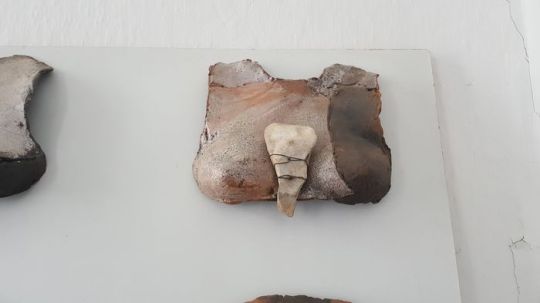
London and the Bastille was at Paris
As a rule there was no citadel as in the ancient cities, though there was sometimes an upper and a lower town, and often a castle in one comer or side of the city, as the Tower is at London and the Bastille was at Paris, St. Angelo at Rome, or Blachernae and the Seven Towers at Constantinople. The place of citadel was usually occupied by some vast central cathedral or abbey; which, with its adjuncts, occupied nearly one-tenth of the whole area in such cities as Lincoln, York, Amiens, Reims, Orvieto; and even in cities like Florence, Paris, Rouen, London, Antwerp, and Cologne, stood out in the far distance towering over the city as did the Acropolis at Athens or the Capitol at Rome. Within the walls, and around the walls for a distance of many miles, was a profusion of churches, abbeys, nunneries, chapels, oratories, varying from such enormous piles as those of Westminster, of Si. Germain des Prfc, St. Peter’s and the Vatican at Rome, to the smallest chantry on the pier of a bridge where a benison could be said.
The ancient temples
Many of these churches were far larger than the ancient temples; and if their architecture had not the stately and simple dignity of the Doric fane, they were far richer in varied works of art, more gorgeous in colour, and infinitely more charged with religious and aesthetic impression. Painting, fresco, mosaic, stained glass, gilding, carved statues, coloured marbles, images and reliefs in thousands, chased gold and silver utensils, bronzes, ivories, silks, velvets, tapestries, embroideries, illuminated books, carved wood, bells, clocks, perfumes, organs, instruments, choirs of singers — every beautiful and delightful thing was crowded together, with the relics of saints, the tombs of great men, the graves of citizens for centuries, wonderworking pictures, miraculous images, lamps and candles on a thousand altars, chapels, offerings and images dedicated to countless saints, martyrs, and holy men. A mediaeval Church, however much it lacked the austere simplicity and faultless symmetry of a Greek temple, was as much deeper and more full in its solemnity and power, as the Catholic mythology was deeper and nobler than the classical mythology city tours istanbul.
So too the Church was morally a far nobler thing than the Temple. It was no mere colonnade for processions, lounging, and society. It was this, but much more also. It was school, art-museum, music-hall, place of personal prayer; of confession of sin, preaching, teaching, and civilising.
It combined what at Athens was to be sought in Parthenon, Theseum, Theatre, Academus, Stoa, and Agora — and very much beside which was never known at Athens at all— sacrament, confession, penance, sermon. A Mediaeval city was full of such centres of moral and spiritual education; and in and around such cities as Rome, Paris, and London, the religious edifices of all kinds were counted not by hundreds, but by thousands. Every great mediaeval city contained its monasteries, nunneries, hospices, and colleges, vast ranges of foundations that were at once schools, training colleges, hospitals, refuges, and poor- houses. Here was the grand difference between the ancient and the mediaeval city.
0 notes
Photo

London and the Bastille was at Paris
As a rule there was no citadel as in the ancient cities, though there was sometimes an upper and a lower town, and often a castle in one comer or side of the city, as the Tower is at London and the Bastille was at Paris, St. Angelo at Rome, or Blachernae and the Seven Towers at Constantinople. The place of citadel was usually occupied by some vast central cathedral or abbey; which, with its adjuncts, occupied nearly one-tenth of the whole area in such cities as Lincoln, York, Amiens, Reims, Orvieto; and even in cities like Florence, Paris, Rouen, London, Antwerp, and Cologne, stood out in the far distance towering over the city as did the Acropolis at Athens or the Capitol at Rome. Within the walls, and around the walls for a distance of many miles, was a profusion of churches, abbeys, nunneries, chapels, oratories, varying from such enormous piles as those of Westminster, of Si. Germain des Prfc, St. Peter’s and the Vatican at Rome, to the smallest chantry on the pier of a bridge where a benison could be said.
The ancient temples
Many of these churches were far larger than the ancient temples; and if their architecture had not the stately and simple dignity of the Doric fane, they were far richer in varied works of art, more gorgeous in colour, and infinitely more charged with religious and aesthetic impression. Painting, fresco, mosaic, stained glass, gilding, carved statues, coloured marbles, images and reliefs in thousands, chased gold and silver utensils, bronzes, ivories, silks, velvets, tapestries, embroideries, illuminated books, carved wood, bells, clocks, perfumes, organs, instruments, choirs of singers — every beautiful and delightful thing was crowded together, with the relics of saints, the tombs of great men, the graves of citizens for centuries, wonderworking pictures, miraculous images, lamps and candles on a thousand altars, chapels, offerings and images dedicated to countless saints, martyrs, and holy men. A mediaeval Church, however much it lacked the austere simplicity and faultless symmetry of a Greek temple, was as much deeper and more full in its solemnity and power, as the Catholic mythology was deeper and nobler than the classical mythology city tours istanbul.
So too the Church was morally a far nobler thing than the Temple. It was no mere colonnade for processions, lounging, and society. It was this, but much more also. It was school, art-museum, music-hall, place of personal prayer; of confession of sin, preaching, teaching, and civilising.
It combined what at Athens was to be sought in Parthenon, Theseum, Theatre, Academus, Stoa, and Agora — and very much beside which was never known at Athens at all— sacrament, confession, penance, sermon. A Mediaeval city was full of such centres of moral and spiritual education; and in and around such cities as Rome, Paris, and London, the religious edifices of all kinds were counted not by hundreds, but by thousands. Every great mediaeval city contained its monasteries, nunneries, hospices, and colleges, vast ranges of foundations that were at once schools, training colleges, hospitals, refuges, and poor- houses. Here was the grand difference between the ancient and the mediaeval city.
0 notes
Photo
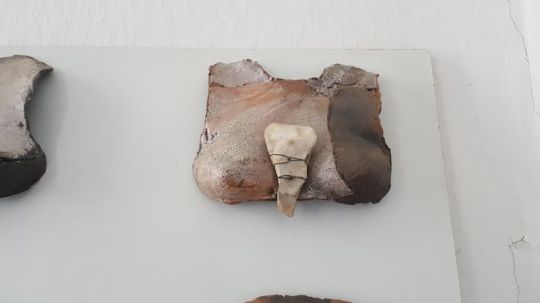
London and the Bastille was at Paris
As a rule there was no citadel as in the ancient cities, though there was sometimes an upper and a lower town, and often a castle in one comer or side of the city, as the Tower is at London and the Bastille was at Paris, St. Angelo at Rome, or Blachernae and the Seven Towers at Constantinople. The place of citadel was usually occupied by some vast central cathedral or abbey; which, with its adjuncts, occupied nearly one-tenth of the whole area in such cities as Lincoln, York, Amiens, Reims, Orvieto; and even in cities like Florence, Paris, Rouen, London, Antwerp, and Cologne, stood out in the far distance towering over the city as did the Acropolis at Athens or the Capitol at Rome. Within the walls, and around the walls for a distance of many miles, was a profusion of churches, abbeys, nunneries, chapels, oratories, varying from such enormous piles as those of Westminster, of Si. Germain des Prfc, St. Peter’s and the Vatican at Rome, to the smallest chantry on the pier of a bridge where a benison could be said.
The ancient temples
Many of these churches were far larger than the ancient temples; and if their architecture had not the stately and simple dignity of the Doric fane, they were far richer in varied works of art, more gorgeous in colour, and infinitely more charged with religious and aesthetic impression. Painting, fresco, mosaic, stained glass, gilding, carved statues, coloured marbles, images and reliefs in thousands, chased gold and silver utensils, bronzes, ivories, silks, velvets, tapestries, embroideries, illuminated books, carved wood, bells, clocks, perfumes, organs, instruments, choirs of singers — every beautiful and delightful thing was crowded together, with the relics of saints, the tombs of great men, the graves of citizens for centuries, wonderworking pictures, miraculous images, lamps and candles on a thousand altars, chapels, offerings and images dedicated to countless saints, martyrs, and holy men. A mediaeval Church, however much it lacked the austere simplicity and faultless symmetry of a Greek temple, was as much deeper and more full in its solemnity and power, as the Catholic mythology was deeper and nobler than the classical mythology city tours istanbul.
So too the Church was morally a far nobler thing than the Temple. It was no mere colonnade for processions, lounging, and society. It was this, but much more also. It was school, art-museum, music-hall, place of personal prayer; of confession of sin, preaching, teaching, and civilising.
It combined what at Athens was to be sought in Parthenon, Theseum, Theatre, Academus, Stoa, and Agora — and very much beside which was never known at Athens at all— sacrament, confession, penance, sermon. A Mediaeval city was full of such centres of moral and spiritual education; and in and around such cities as Rome, Paris, and London, the religious edifices of all kinds were counted not by hundreds, but by thousands. Every great mediaeval city contained its monasteries, nunneries, hospices, and colleges, vast ranges of foundations that were at once schools, training colleges, hospitals, refuges, and poor- houses. Here was the grand difference between the ancient and the mediaeval city.
0 notes
Text
Resilience in the wake of crisis, Infrastructure Executive Search Firm Granger Reis on the challenge for today’s leadership
Where do times of momentous change, such as Covid-19 and the global climate crisis, leave leadership? Navigating these challenging times has certainly prompted reflection for today’s leaders. Especially, how we can build a new form of resilience going forward.
‘In times of turmoil, the danger lies not in the turmoil but in facing it with yesterday’s logic’.
This phrase from leadership author Peter Drucker appearing in Regenerative Leadership, The DNA of life-affirming 21st century organizations seems pertinent in the wake of the Covid-19 pandemic and perhaps serves as a caution to leaders who are facing the dilemmas of today.
The turn of phrase “What got us here, won’t get us there” comes to mind when talking to leaders across our networks at Infrastructure Executive Search Firm Granger Reis.
Concepts of leadership in the past were entrenched in macho interpretations of resilience — zeal valued over thorough preparation — when facing an imminent challenge. However, times are changing.
As Toby Willison, Executive Director at the Environment Agency, said: “I have seen a huge shift over the last two decades from a macho “I’ll do every shift for as long as it takes” attitude to a wellbeing focused response that recognises the importance of rest, recuperation and recovery. No longer is presenteeism seen as a badge of honor. But to embed this culture does require constant reinforcement and leadership.”
Now, we are beginning to see that those who have invested in the wellbeing of their workforce are experiencing the highest rewards in the wake of the Covid-19 crisis. ESG investment indices indicate this, seemingly more robust in the aftermath of the pandemic than their broad-market counterparts.
Liz Benison, who leads Arriva in Mainland Europe, observed that her organization has employed a more human-centric approach during the Covid-19 crisis: “One of the things that I’ve been exploring (and has really stood us in good stead), is that yes, our leaders have been resilient, but they have also displayed remarkable compassion; for their passengers and the staff directly impacted, but also for the longer term implications of the pandemic in terms of job security and other societal outcomes.”
Hutchins and Storm suggest modern resilience should be acknowledging our place within the world with a more holistic view. Conducting business without putting our planet, resources and people in jeopardy is possible they stress, urging leaders to view the bigger picture and instead of isolating issues see the links between them to avoid further systemic problems.
Resilience rather than efficiency is a view John Elkington draws upon in Green Swans: The coming boom in regenerative capitalism. In his chapter on leadership, called ‘Swanning around Boardrooms’ Elkington quotes CEO advisor Roger Martin, who emphasizes that ‘superefficient businesses create the potential for social disorder’. In the long-term, Martin urges that resilience is the best business practice. Whilst it may reduce the short-term gains from efficiency, over time it will result in greater stability and a more equitable business environment.
The unprecedented nature of the last few months has revealed the need to redesign our business strategies in order to address inherent vulnerabilities within the system. Learning to pause, breathe and look at the bigger picture and take a long- term view, is perhaps my favorite definition so far of what New Resilience looks like.
1 note
·
View note
Text
While the prison-camp ornithologists took their notes, their lives were being controlled by camp administrators and guards, their futures dictated by the frighteningly unknowable progression of the war. They were crammed into close quarters, fed noisome rations, trapped in a situation in which they had no control over what would happen to them. But they could observe. ‘‘I used to watch this pair of goldfinches for 10 hours a day,’’ Peter Conder wrote, ‘‘and sometimes up to 13 hours, with only a minute or two for breaks.’’ The simple act of watching the birds could lessen the grip of dismal circumstances upon these men. But by making their careful notes, they did something more: grant themselves a new sense of control. Like his fellow bird-minded internees, Conder wrote down everything the birds did, every visit they made to the nest, every song, every flight to and from nearby trees, every hop and scratch and turn. These men were writing trajectories, borrowed from the lives of birds, that made the passing of time meaningful. Trajectories that ran backward rather than forward, but were reassuringly solid and sustained all the same.
The word ‘‘observation’’ comes from the Latin observatio, and its etymological history spans acts of both observation and observance. As I read these prison-camp notebooks, I began to see that what these men did was a form of devotion. They were using the small lives of birds as things they could orient themselves against. Their patient observations remind me of how monks in medieval monasteries ordered their days to fill them with meaning. How they made careful notes of the weather, of the changing pattern of the stars, and how they timed their prayers according to the precise positions of celestial objects. I never thought that I could be content to stay still, but I remember those monks, look at the notes taken by the men watching small birds behind the wire, and think, too, of Elisabeth Tova Bailey’s book ‘‘The Sound of a Wild Snail Eating,’’ the story of how, confined to bed for many months by a debilitating mitochondrial disease, she made careful observations of a tiny snail that had been brought in from outside in a pot of violets, transforming what she saw into a rich meditation on snails and time and habitation and purpose at a time when all other life was out of reach. What she came to understand during that time is something I have been late in learning. We don’t need to strike out into the wild to feel close to the natural world and receive benison from it. From one place, we can witness the sweep and dip of the universe about us. The stars over the monastery gables, the birds on the wire, the street pigeons that visit the patch of grass behind my house before flying off elsewhere. We can become deeply connected to the world through paying the most careful and fearless attention to what we can see, from wherever it is we must be.
Helen Macdonald, from The Comfort of Common Creatures
0 notes
Text

anon said : "alright kiddo, up and at'em! Big day today and it's already 5pm. Your ass slept too damn long!" He's full of grinning mirth as palms swipe cross alarm, FRIDAY shifting numeral to display 5.23 pm. Yet truth be it was a mere 9am. He strides forth, grasping pillow before abruptly smacking the other with wild laughter on tongue. "Enough sleepy time bug bite, up up, let's go. Ass movin come on!" - bc i dont have tony on tumblr but here
LET IT BE KNOWN THAT HE & THE SUN ARE KINDRED SPIRITS . they rise with similar energy / warmth & growth blessed be to all whom so rightfully experience his presence . to rejoice within his company is a benison known to most , but to truly bask in the endearing glow of peter parker , one must acknowledge all of what he does as a HERO to all & what he will do as a philanthropist of the future — only a select few know the joys of companionship with peter & one of those very individuals is currently donning a wolfish grin & laying waste to the student's haze of slumber via a rude assault to the back of chestnut crown with one of the many bed's pillows .
an exasperated groan leaks from 'tween morning - dry tiers , a lazy limb bracing for another hit by launching out towards the rear as a weak shield . ' mmmmmhnrgh . . no hitting . . s'not nice . . ' vocals are all squeak , husk & grumble , nearby pillow taken with unoccupied hand to smash o'er tousled locks . ' i . . didn't . . shleep too . . lon--- ' thick - lashed lids crack open just slight for a spare glance towards alarm clock settled on night stand . . . & behold , the pallid cream of his flesh drains to something snowy -- blood having run cold .

‘ you let me sleep in on a SATURDAY ?! '
appendages ignite to a fresh start , fueled by the adrenaline of acknowledging that he , a teenager , has apparently SLEPT THROUGH a weekend day . the weekend is a sacred time ! especially for a student & aspiring avenger with as much work to do as he . if he were able to form any coherent thought other than to reach for & scroll through his phone whilst simultaneously calculating the duration of time it would take to eat , shower , change into appropriate attire for the day & STILL inquire as to whether or not ned & mj had plans , he might have halted for a moment to realize . . . that despite the clock depicting well o'er 5:30pm , the sun itself still retains its purchase high in the sky & the ambiance of it all screams morning . tony's barking laughter may provide an indication that this were a prank on his part -- yet the mind of the young genius is racing a mile a moment & none of what makes sense about the whole ordeal breaches through other whirling thoughts .
' why didn't you wake me up sooner ?! didn't you hate it when you slept through a day off ??? 2man , tony , i'm not gonna have time to do anything today , aunt may was talking about how she might want me home earlier tonight for some -- sort of -- s - surprise or whatever , & look -- ! l - look my phone's got a million notifications already and -- oh -- wait those are emails . . i only got one text from ned . . okayokayokay but STILL -- '
#u____u#god didnt you hate that when you were in high school#i know i did#❝ ★ YOU KNOW I’M JUST A HOLLER AWAY &&. answered .#❝ ★ WE COULD BE THE BREAKS / ONES WHO NEVER MADE IT &&. marvel / earth 616 .
0 notes
Photo

London and the Bastille was at Paris
As a rule there was no citadel as in the ancient cities, though there was sometimes an upper and a lower town, and often a castle in one comer or side of the city, as the Tower is at London and the Bastille was at Paris, St. Angelo at Rome, or Blachernae and the Seven Towers at Constantinople. The place of citadel was usually occupied by some vast central cathedral or abbey; which, with its adjuncts, occupied nearly one-tenth of the whole area in such cities as Lincoln, York, Amiens, Reims, Orvieto; and even in cities like Florence, Paris, Rouen, London, Antwerp, and Cologne, stood out in the far distance towering over the city as did the Acropolis at Athens or the Capitol at Rome. Within the walls, and around the walls for a distance of many miles, was a profusion of churches, abbeys, nunneries, chapels, oratories, varying from such enormous piles as those of Westminster, of Si. Germain des Prfc, St. Peter’s and the Vatican at Rome, to the smallest chantry on the pier of a bridge where a benison could be said.
The ancient temples
Many of these churches were far larger than the ancient temples; and if their architecture had not the stately and simple dignity of the Doric fane, they were far richer in varied works of art, more gorgeous in colour, and infinitely more charged with religious and aesthetic impression. Painting, fresco, mosaic, stained glass, gilding, carved statues, coloured marbles, images and reliefs in thousands, chased gold and silver utensils, bronzes, ivories, silks, velvets, tapestries, embroideries, illuminated books, carved wood, bells, clocks, perfumes, organs, instruments, choirs of singers — every beautiful and delightful thing was crowded together, with the relics of saints, the tombs of great men, the graves of citizens for centuries, wonderworking pictures, miraculous images, lamps and candles on a thousand altars, chapels, offerings and images dedicated to countless saints, martyrs, and holy men. A mediaeval Church, however much it lacked the austere simplicity and faultless symmetry of a Greek temple, was as much deeper and more full in its solemnity and power, as the Catholic mythology was deeper and nobler than the classical mythology city tours istanbul.
So too the Church was morally a far nobler thing than the Temple. It was no mere colonnade for processions, lounging, and society. It was this, but much more also. It was school, art-museum, music-hall, place of personal prayer; of confession of sin, preaching, teaching, and civilising.
It combined what at Athens was to be sought in Parthenon, Theseum, Theatre, Academus, Stoa, and Agora — and very much beside which was never known at Athens at all— sacrament, confession, penance, sermon. A Mediaeval city was full of such centres of moral and spiritual education; and in and around such cities as Rome, Paris, and London, the religious edifices of all kinds were counted not by hundreds, but by thousands. Every great mediaeval city contained its monasteries, nunneries, hospices, and colleges, vast ranges of foundations that were at once schools, training colleges, hospitals, refuges, and poor- houses. Here was the grand difference between the ancient and the mediaeval city.
0 notes
Photo
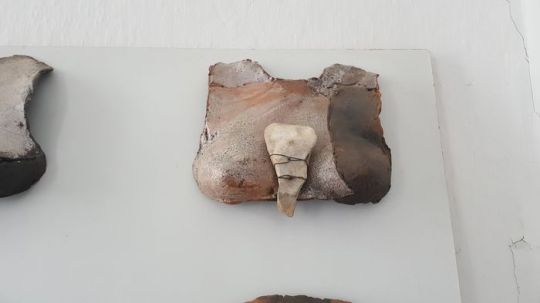
London and the Bastille was at Paris
As a rule there was no citadel as in the ancient cities, though there was sometimes an upper and a lower town, and often a castle in one comer or side of the city, as the Tower is at London and the Bastille was at Paris, St. Angelo at Rome, or Blachernae and the Seven Towers at Constantinople. The place of citadel was usually occupied by some vast central cathedral or abbey; which, with its adjuncts, occupied nearly one-tenth of the whole area in such cities as Lincoln, York, Amiens, Reims, Orvieto; and even in cities like Florence, Paris, Rouen, London, Antwerp, and Cologne, stood out in the far distance towering over the city as did the Acropolis at Athens or the Capitol at Rome. Within the walls, and around the walls for a distance of many miles, was a profusion of churches, abbeys, nunneries, chapels, oratories, varying from such enormous piles as those of Westminster, of Si. Germain des Prfc, St. Peter’s and the Vatican at Rome, to the smallest chantry on the pier of a bridge where a benison could be said.
The ancient temples
Many of these churches were far larger than the ancient temples; and if their architecture had not the stately and simple dignity of the Doric fane, they were far richer in varied works of art, more gorgeous in colour, and infinitely more charged with religious and aesthetic impression. Painting, fresco, mosaic, stained glass, gilding, carved statues, coloured marbles, images and reliefs in thousands, chased gold and silver utensils, bronzes, ivories, silks, velvets, tapestries, embroideries, illuminated books, carved wood, bells, clocks, perfumes, organs, instruments, choirs of singers — every beautiful and delightful thing was crowded together, with the relics of saints, the tombs of great men, the graves of citizens for centuries, wonderworking pictures, miraculous images, lamps and candles on a thousand altars, chapels, offerings and images dedicated to countless saints, martyrs, and holy men. A mediaeval Church, however much it lacked the austere simplicity and faultless symmetry of a Greek temple, was as much deeper and more full in its solemnity and power, as the Catholic mythology was deeper and nobler than the classical mythology city tours istanbul.
So too the Church was morally a far nobler thing than the Temple. It was no mere colonnade for processions, lounging, and society. It was this, but much more also. It was school, art-museum, music-hall, place of personal prayer; of confession of sin, preaching, teaching, and civilising.
It combined what at Athens was to be sought in Parthenon, Theseum, Theatre, Academus, Stoa, and Agora — and very much beside which was never known at Athens at all— sacrament, confession, penance, sermon. A Mediaeval city was full of such centres of moral and spiritual education; and in and around such cities as Rome, Paris, and London, the religious edifices of all kinds were counted not by hundreds, but by thousands. Every great mediaeval city contained its monasteries, nunneries, hospices, and colleges, vast ranges of foundations that were at once schools, training colleges, hospitals, refuges, and poor- houses. Here was the grand difference between the ancient and the mediaeval city.
0 notes
Text

Christmas Encore (2017)
Hallmark Movies & Mysteries
Overall: ⭐️⭐️1/2
Impression: cute in a fluffy Hallmark way
Collection: nope
Concept: ⭐️⭐️
Story: ⭐️⭐️
Storytelling: ⭐️⭐️1/2ish
Characters: ⭐️⭐️⭐️
Casting: ⭐️⭐️⭐️
Visually: ⭐️⭐️⭐️
Score: ⭐️⭐️1/2
Entertainment: ⭐️⭐️1/2ish
Best: nothing stands out
Worth: that it never grabs you
#christmas encore#2017#christmas#holiday#movie rating#film rating#tv ratings#movie review#hallmark movies and mysteries#bradley walsh#mark amato#jennifer notas shapiro#sean nimmons paterson#peter benison#paul whitehead#maggie lawson#brennan elliott#art hindle#tracey hoyt#mercedes de la zerda#mika amonsen#sherry miller#sabryn rock#david tompa#erin agostino#bea santos#joy tanner#murray furrow#marie dame#confessionsofabingefreak
1 note
·
View note
Text

youtube
A Wish Come True (2015)
Hallmark Channel
Impression: just skip it
Collection: not a chance
Overall: ⭐️1/2
Concept ⭐️
Story: ⭐️1/2
Storytelling: ⭐️⭐️
Characters: ⭐️
Casting: ⭐️⭐️⭐️
Visually: ⭐️⭐️⭐️
Score: ⭐️⭐️⭐️
Entertainment: ⭐️
Best: showing that sometimes what you wish for most is right under your nose
Worst: the movie, sitting through it
#a wish come true#2015#romantic comedy#hallmark channel#movie rating#film rating#tv ratings#movie review#mark rosman#james gelfand#peter benison#megan park#benjamin hollingsworth#anthony lemke#olunike adeliyi#dean armstrong#aidan shipley#jennifer dale#ron lea#karen cliche#dean cain#brian paul#confessionsofabingefreak
0 notes